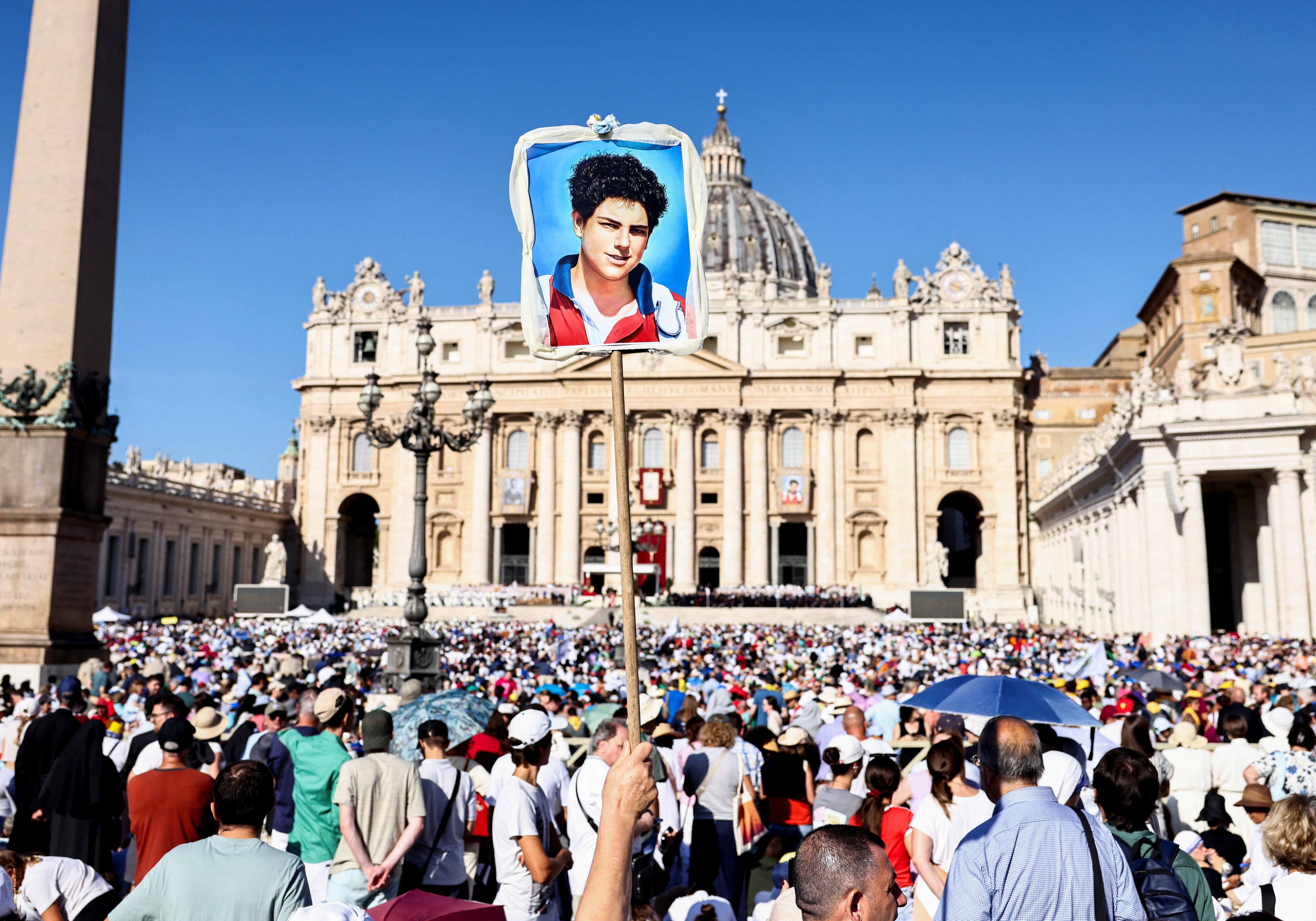April 6, 2018 at 1:53 p.m.
Lent: A time to explore prayer styles
Here are several ways that people may choose to pray during this millennium Lenten season:
CENTERING PRAYER
One of the oldest forms of prayer, the simple, centering prayer sets up the ideal conditions to rest in quiet awareness of God's presence. Alluded to in many passages of both the Old and New Testaments of the Bible, the Greek Fathers referred to this form of prayer as "monologion" or one-word prayer.Although out of public favor by the 16th century, centering prayer began its comeback during the end of the 20th century.
Rev. M. Basil Pennington, OCSO, who offers guidelines at www.lectiodivina.org, says that "by quieting one's mind to all thoughts and centering on one word from Scripture, one puts oneself in the awareness of waiting for God. Centering prayer is not just a technique; it is being open to God in faith and love."
TAIZE
Another popular form of prayer was developed by Brother Roger Schutt in the small village of Taize, France, in 1940. There, an ecumenical movement led to a form of prayer that appeals to many throughout the world, particularly young adults.Brother Roger, after witnessing the mass destruction in Europe during World War II wanted to establish a place where people could go to seek forgiveness and pray for peace. Begun with just a handful of monks, Taize communities have spread around the world.
"Prayer is a serene force at work within human beings, stirring them up, transforming them, never allowing them to close their eyes in the face of evil or wars," Brother Roger wrote. "Nothing is more conducive to communion with the living God than a meditative, common prayer with singing that never ends, but continues in the silence of one's heart, when one is alone again."
The service consists of prayer, music, song, Gospel readings, quiet meditation, chants and veneration of the Cross. Prayers of intercession are sometimes said. The music is composed of simple melodies with short passages based on Scripture. Singing is interspersed with quiet meditation that allows for an opportunity to speak to God and to allow God to speak to the silence of the heart.
LECTIO DIVINA
Lectio Divina, which means "the divine reading" in Latin, is an ancient monastic designation for meditative reading of Scripture.There are four elements to Lectio Divina:
* Lectio -- reading and careful, repetitious recitation of a short text of Scripture;
* Meditatio -- meditation, an effort to understand the text and make it personally relevant to oneself in Christ;
* Oratio -- prayer, taken as a personal response to the text, asking for the grace of the text or moving over it toward union with God; and
* Contemplatio -- contemplation and understanding of the text.
LABYRINTH
The Labyrinth is an ancient spiritual form that encourages prayer and concentration in the context of a walking meditation. The design of the labyrinth is taken from that of the circuit labyrinth laid in the floor of the Chartres Cathedral in France, built in 1220.Labyrinths are part of the mystical tradition that looks for a direct connection to the Divine and seeks real transformation of the person who walks it.
According to Sister Katherine Hanley, CSJ, of the Diocesan Vocations Team, people in the Middle Ages could not travel far from home on pilgrimages and used the labyrinth to complete their trips of prayer and meditation.
"For different people, the labyrinth has different meanings," she told The Evangelist. "For some, it symbolizes the earth, air, fire and water. For others, it represents childhood, adolescence, adulthood and old age. For others, walking a labyrinth symbolizes the life journey that each of us travels."
The opposite of a maze that is constructed to confuse the walker, the labyrinth is designed to take the walker easily to its center. Once there, after quietly resting and meditating, the walker returns back the way he or she came to where they will leave the labyrinth and spread the good news of God's word to the world.
"Labyrinths are becoming very popular," said Sister Kitty, who noted that there is a permanent one outside the Veteran's Hospital in Albany. "It has proven very therapeutic for people, particularly those waiting for a loved one who is in surgery."
Many retreat centers also include labyrinths as a means of allowing participants quiet time for reflection and prayer. At the annual Spring Enrichment to be held at The College of Saint Rose the week of May 14, there will also be a labyrinth.
Benefits from walking a labyrinth are many: the discovery or continuation of a quest for inner peace and deeper spirituality; becoming more in tune with one's body, mind, heart and soul; reduction of stress, pressure and anxiety; feeling better about oneself; enhancing a person's spiritual journey; finding meaning, strength and healing in times of trouble or transition; and building a spiritual community among a group of people.
For more information about labyrinths, go to www.trinitysb.org or www.christway.org/laby_rinth.html.
(03-01-01) [[In-content Ad]]
- Pope’s birthday celebrated in Peru with cakes and prayer
- Honesty, vigilance, faith all key to kids’ healing from trauma, say Catholic psychologists
- Love is at the heart of a vocation, pope tells Augustinians
- Theology must address climate change, AI, other real concerns, pope says
- Pope encourages hiring people with disabilities at the Vatican
- Pope urges church to listen to sorrows of abuse victims, walk together
- Rebuilding the domestic church: Why housing affordability is a pro-family cause
- Catholic University launches new AI institute led by Microsoft’s Taylor Black
- Sunflowers grace Miami shrine as Cuban Americans celebrate feast of Our Lady of Charity
- Ecumenical festival in Iraq proves strong faith of Christians once under Islamic persecution







Comments:
You must login to comment.